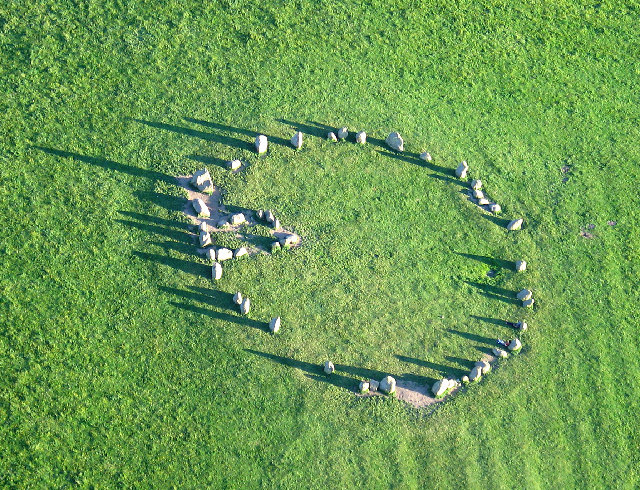Castlerigg Stone Circle, nestled in the Lake District of England, is a prehistoric monument that commands attention. This stone circle is one of the earliest in Britain, dating back to the Neolithic period. It consists of 38 stones in a layout that is both intriguing and mysterious. The panoramic views of the surrounding fells make Castlerigg a visual spectacle, and its historical significance adds to its allure. Scholars believe it was a site for ceremonies or trade, but its exact purpose remains a topic of debate. Castlerigg Stone Circle continues to captivate visitors and researchers alike with its ancient charm and enigmatic past.
Get your dose of History via Email
Historical Background of Castlerigg Stone Circle
Castlerigg Stone Circle’s discovery dates back to antiquity, with its origins shrouded in mystery. It was likely built around 3000 BC, making it one of the earliest stone circles in Europe. The circle was not excavated until the 18th century, when antiquarians began to take interest. John Aubrey and William Stukeley, among others, documented these megalithic structures, but Castlerigg’s first detailed study was by John F. Curwen in 1913.
The circle’s architects were part of a Neolithic community, whose purpose for the site is still debated. There is no concrete evidence of habitation at Castlerigg, suggesting it was not a dwelling site. However, its strategic location and layout hint at a ceremonial or communal function. The circle’s alignment with the sun and moon suggests astronomical significance, possibly used for rituals or as a calendar.
Throughout history, Castlerigg has remained relatively undisturbed. This lack of disturbance has preserved its original form, providing a window into Neolithic Britain. The site has not been the scene of any known historical events, but its endurance through millennia speaks to its importance for ancient peoples.
While Castlerigg’s builders are long gone, their legacy endures. The site has become a cultural touchstone, representing a tangible link to Britain’s prehistoric past. It is a protected monument, ensuring its preservation for future generations to explore and interpret.
Castlerigg Stone Circle has not been inhabited in the modern sense, but it has been a continuous point of interest. It has inspired artists, writers, and spiritual seekers. The circle’s mystique and natural beauty make it a beloved landmark in the Lake District, drawing visitors from around the world.
About Castlerigg Stone Circle
Castlerigg Stone Circle stands on a superb natural plateau, surrounded by a panorama of higher peaks. The stones vary in height, with the tallest reaching approximately 2.3 meters. The circle spans about 30 meters in diameter, with a significant rectangular ‘sanctuary’ area within it.
The stones themselves are of local origin, likely sourced from the nearby fells. They are predominantly volcaniclastic rock, chosen for their size and shape. The builders of Castlerigg arranged the stones carefully, with the largest stones positioned at the widest part of the ellipse.
Castlerigg’s construction would have required a significant communal effort. The transportation and placement of the stones suggest a well-organized society with shared beliefs or goals. The circle’s design is sophisticated, with an entrance that aligns with the midwinter sunset, hinting at an understanding of astronomy.
Architectural highlights of Castlerigg include its outlier stones, which stand apart from the main circle. These outliers may have had special significance, possibly related to the solstices or equinoxes. The rectangular ‘sanctuary’ within the circle is also unique, setting Castlerigg apart from other stone circles.
Despite its age, Castlerigg Stone Circle remains in a remarkable state of preservation. The site has not undergone any significant reconstruction, allowing visitors to experience the monument much as ancient peoples would have.
Theories and Interpretations
Castlerigg Stone Circle has been the subject of various theories and interpretations. Its purpose, while not definitively known, is widely believed to be ceremonial or religious. The circle’s alignment with celestial bodies suggests it may have been an astronomical observatory or calendar.
Some theories propose that Castlerigg was a site for trade or social gatherings. Its panoramic location would have made it an ideal meeting place for Neolithic communities. The presence of a ‘sanctuary’ area within the circle could indicate a space for more intimate or sacred activities.
Mysteries abound at Castlerigg, particularly regarding the placement of its stones. The circle’s layout and the positioning of outlier stones seem intentional, but their exact significance is lost to time. Researchers have matched the site’s features with historical records, but many questions remain.
Dating of Castlerigg Stone Circle has been carried out using various methods. Radiocarbon dating of the soil beneath the stones suggests a construction date of about 3000 BC. This places Castlerigg among the earliest stone circles in Britain.
The interpretations of Castlerigg are as varied as the people who study it. While its true purpose may never be fully understood, the circle continues to inspire and intrigue. It is a testament to the complexity and ingenuity of prehistoric societies.
At a glance
- Country: England
- Civilization: Neolithic Britain
- Age: Approximately 5000 years old (circa 3000 BC)
Conclusion and Sources
- Wikipedia – https://en.wikipedia.org/wiki/Castlerigg_stone_circle
- English Heritage – https://www.english-heritage.org.uk/visit/places/castlerigg-stone-circle/
- World History Encyclopedia – https://www.worldhistory.org/Castlerigg_Stone_Circle/
- UNESCO – https://whc.unesco.org/
- The Megalithic Portal – https://www.megalithic.co.uk/article.php?sid=104

